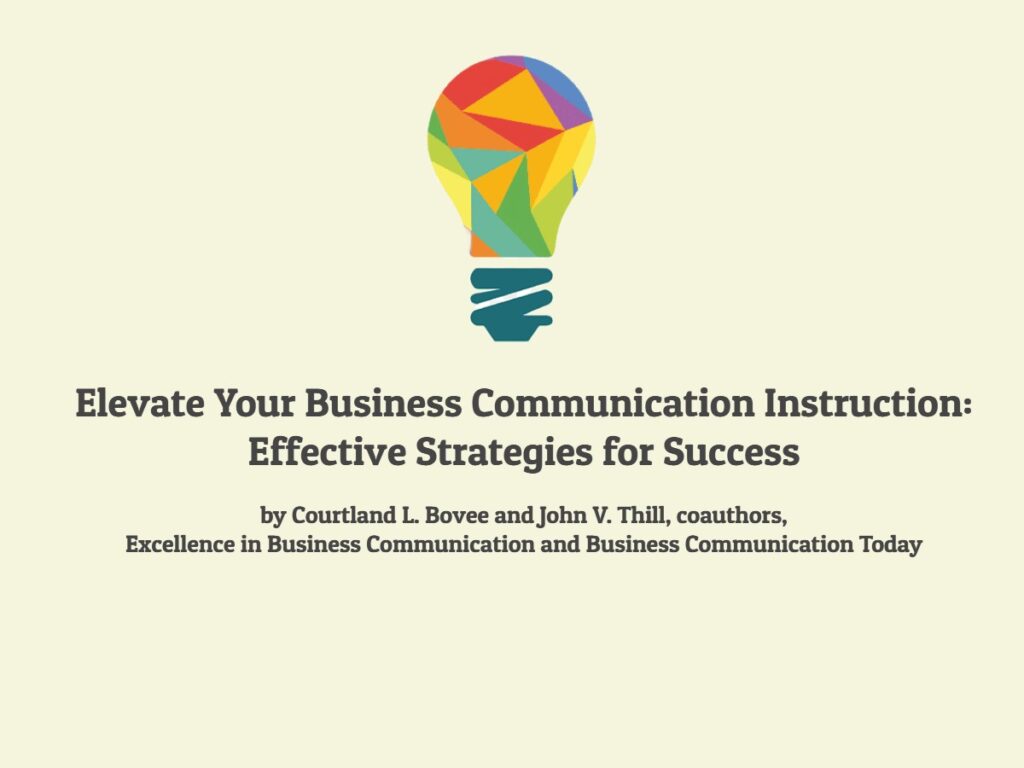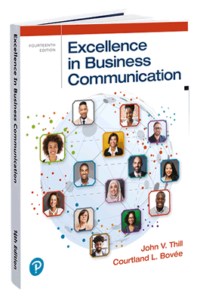
As a business communication instructor, shaping future professionals requires a dynamic approach that fosters both knowledge and practical skills. Here are key strategies to become a more effective instructor and empower your students, supported by research references:
1. Tailor your communication to your audience. Understand your students' backgrounds, learning styles, and career aspirations. Adapt your communication style and course content to their needs, ensuring the material resonates and inspires engagement (Chickering & Reisser, 1993).
2. Bridge theory and practice. Make learning relevant by clearly communicating course objectives and incorporating real-world examples. Showcase how the concepts they're learning translate into practical scenarios they'll encounter in their careers (Bransford et al., 2000).
3. Create a dynamic learning environment..Maintain organization, provide regular assessments for self-evaluation, and leverage multimedia tools like presentations, videos, and online resources. This keeps your lessons engaging and caters to diverse learning preferences (Chickering & Gamson, 1987).
4. Foster collaboration and inclusivity. Encourage teamwork through group discussions, case studies, and role-playing exercises. This builds a supportive learning community where diverse perspectives are valued, fostering growth and collaboration (Johnson & Johnson, 2009).
5. Stay ahead of the curve. Remain updated on the latest business communication trends by reading industry publications, attending conferences, and taking relevant courses. This ensures your curriculum reflects current practices and prepares students for success in the evolving business landscape (Kuh, 2003).
6. Employ diverse teaching methods. Engage students with a variety of teaching methods beyond lectures. Utilize group discussions, case studies, role-playing exercises, simulations, and technology-aided presentations to cater to different learning styles and keep students actively involved (Chickering & Gamson, 1987).
7. Provide constructive feedback.Offer clear and actionable feedback to help students refine their communication skills. This personalized guidance empowers them to identify areas for improvement and track their progress (Bangert et al., 2002).
8. Assess effectively. Design assessments that accurately measure student learning and progress. Offer opportunities for them to apply their knowledge through practical exercises and projects, solidifying their understanding (Angelo & Cross, 1993).
9. Build connections. Facilitate connections between students and professionals in the field. Organize guest lectures, industry visits, or career networking events. This exposure provides valuable insights and strengthens their professional network (Jacobi, 2014).
10. Embrace technology. Integrate technology seamlessly into your teaching. Utilize multimedia tools in lessons, create interactive online resources, and leverage online discussion forums for collaborative learning (Picciano, 2007).
11. Prioritize organization and time management. Effective feedback and student support require efficient time management skills. Stay organized and plan your course effectively to ensure timely communication and support for your students (Larson-Hall & Gollnick, 2010).
12. Continuously improve. Regularly evaluate your teaching methods and materials, seeking feedback from students, colleagues, and industry professionals. This self-reflection allows you to continuously refine your approach and stay informed about best practices (Schon, 1983).
By implementing these strategies, supported by research on effective teaching and learning, you can create a dynamic and enriching learning environment that empowers your students to become confident and effective business communicators, prepared to thrive in business.
 How Excellence in Business Communication Can Elevate Your Teaching
How Excellence in Business Communication Can Elevate Your Teaching
The textbook, Excellence in Business Communication, can significantly enhance your ability to implement the strategies you've implemented and elevate your teaching to a new level. Here's how:
1. Tailoring Communication and Bridging Theory and Practice. The textbook provides diverse communication approaches like clear explanations, storytelling, and case studies, allowing you to adapt your style to different learning preferences. It offers a wealth of real-world examples and case studies across various industries, making it easier to showcase the practical application of theoretical concepts.
2. Creating a Dynamic Learning Environment: The book includes interactive exercises, discussion prompts, and role-playing scenarios that you can directly incorporate into your lessons, fostering active participation and collaboration. It offers guidance on utilizing multimedia tools like presentations, videos, and online resources, aligning with strategy number 10 above.
3. Fostering Collaboration and Inclusivity: The textbook provides suggestions for group activities, team projects, and peer review exercises, directly supporting strategy number 4 above.It emphasizes the importance of creating a respectful and inclusive classroom environment where diverse perspectives are valued.
4. Staying Ahead of the Curve and Employing Diverse Teaching Methods:The textbook is regularly updated to reflect the latest trends and best practices in business communication, aligning with strategy number 5 above.
5. Providing Constructive Feedback and Assessing Effectively: The book offers guidance on providing effective feedback that is specific, actionable, and focused on improvement, aligning with strategy number 7 above. It suggests various assessment methods like case studies, presentations, and portfolios, supporting strategy number 8 above.
6. Building Connections and Embracing Technology: The textbook provides guidance on inviting guest speakers from the business world, aligning with strategy number 9. It encourages the use of online learning platforms and collaborative tools, supporting strategy number 10 above.
Overall, using Excellence in Business Communication as a resource can save you significant time and effort in lesson planning, providing you with readily available materials and activities that directly support the effective teaching strategies outlined in this post.
Additionally, the book can serve as a springboard for further exploration and adaptation. The provided references and case studies can inspire you to develop your own unique teaching methods and activities, catering to your specific students and course objectives. By leveraging the comprehensive content and practical guidance offered by "Excellence in Business Communication," you can significantly enhance your teaching effectiveness and empower your students to become confident and successful business communicators.
References:
Angelo, T. S., & Cross, K. P. (1993). Classroom assessment techniques: A handbook for college teachers. Jossey-Bass.
Bangert, R. L., Blasi, K. A., & Smith, D. G. (2002). Effective feedback in writing and research courses. Jossey-Bass.
Bransford, J. D., Brown, A. L., & Cockins, R. (2000). How people learn: Brain, mind, experience, and school. National Academies Press.
Chickering, A. W., & Gamson, Z. F. (1987). Seven principles for good practice in undergraduate education. AAHE Bulletin, 39(7), 3-7.
Chickering, A. W., & Reisser, L. (1993). Education and identity. AAHE Bulletin, 45(3), 3-9.
Jacobi, M. (2014). Connecting classroom learning to professional practice: Strategies for business communication courses. Journal of Business Communication, 51(3), 306-3